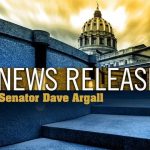Public Education has been an important element of the Commonwealth of Pennsylvania for nearly 250 years. The second state constitution, adopted in 1790, provided that the state legislature shall establish schools “throughout the state in such a manner that the poor shall be taught gratis.” In 1834, Pennsylvania enacted the “Free School Act” fostering the formation of local school district to provide free basic education for all children. Today, the state constitution requires that “The General Assembly shall provide for the maintenance and support for a thorough and efficient system of public education.”
While local school districts, and their governing school boards, retain their authority over the operations of the public schools, it was recognized that the ability of local districts to generate the requisite funding to provide a quality education varied significantly across the state, so the goal was for state government to balance the inequities in local taxing ability and provide half of the overall state cost of basic education. This means that poorer school districts, those that have a more difficult time in generating local tax revenues through real estate and local income taxes, would receive more funding per pupil than their wealthier counterparts.
The state legislature devised a funding mechanism to distribute these state dollars, based on the relative wealth of the local school district, the average cost of an education and the enrollment within each district. But for the last 30 years, funding has largely been distributed based on what each district received the prior year, regardless of any changes in student enrollment, the relative wealth of the district, or the average cost of an education.
The failure of the state to reach its goal of funding half of the costs of education, coupled with the inability to recognize changes in enrollment or cost, has led to significant inequities in school funding and mounting pressure to increase local revenue sources.
The result has been a number of lawsuits filed by some districts, efforts to revamp and update the school funding formula, mounting pressure to reduce or eliminate local property taxes and interest in alternatives to public education.
Public School Funding has been controversial from the beginning of public education in the Commonwealth. Shortly after the state legislature adopted the Free School Act, there was pressure to repeal the act.
There have been recent efforts to direct some new resources to school districts based on student enrollment and student and district demographics, but these represent only a portion of the state’s support for basic education. But there are still challenges remaining.
Today there are 500 school districts in Pennsylvania, ranging in population from 188 students to 124,111. Based on the school district aid ratio, which is an inverse index of the ability of each district to raise funds from local tax sources, the Reading School District is the poorest in the state. There are 19 districts that are among the wealthiest in the state, because they have the lowest aid ratio established by state law as the minimum. While Charter Schools are not directly funded by the state school subsidy program, they do receive indirect state support.
Join us for a conversation led by Hannah Barrick, the CEO of the Pennsylvania State Association of Business Officials, about the challenges and opportunities with school funding in Pennsylvania.
When: Nov 17, 2022 11:30 AM Eastern Time (US and Canada)
Register in advance for this meeting: https://us02web.zoom.us/meeting/register/tZYsd-ysrjIuGd2D388DCQN2ATFa8bXt8KwO




